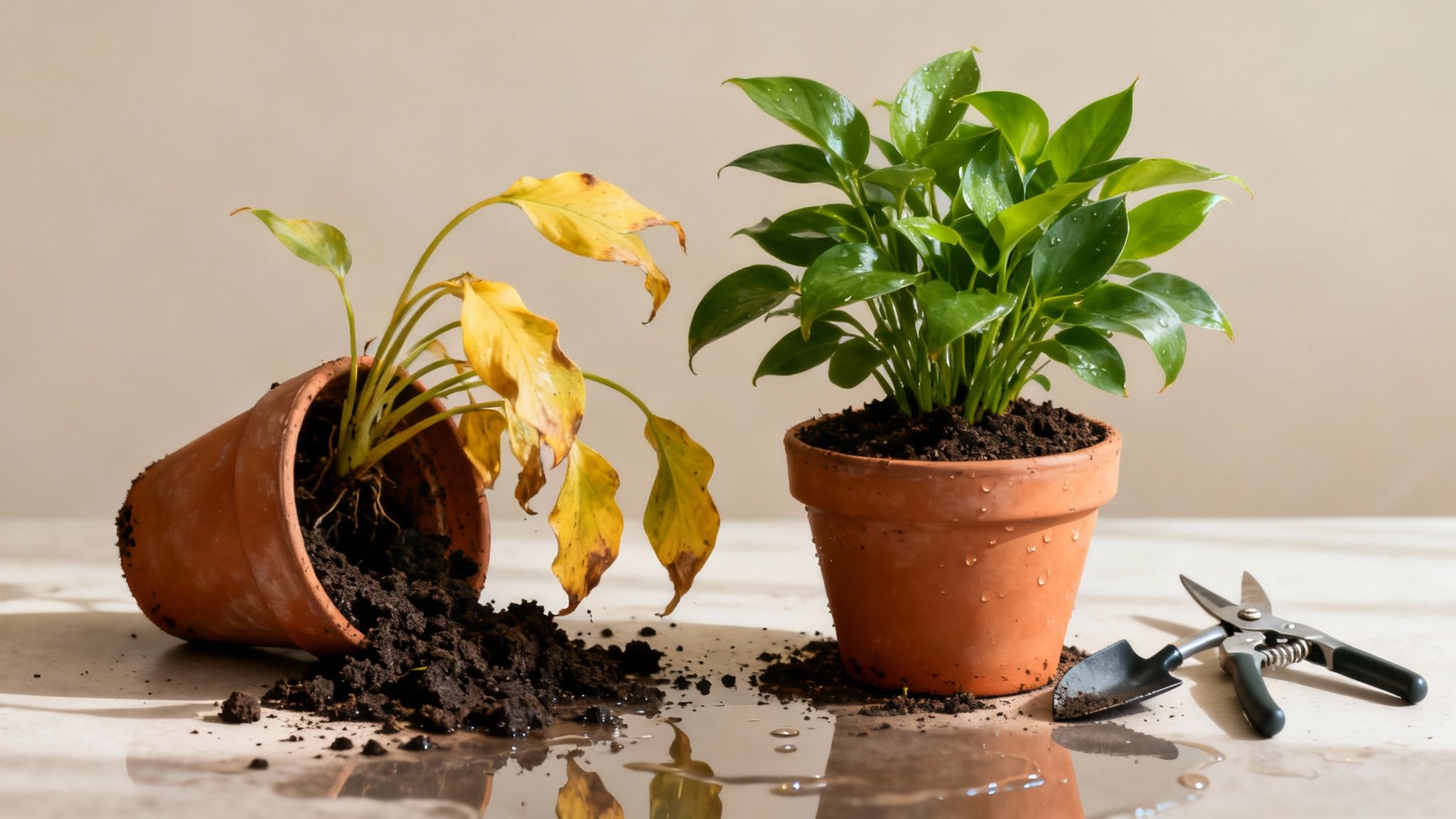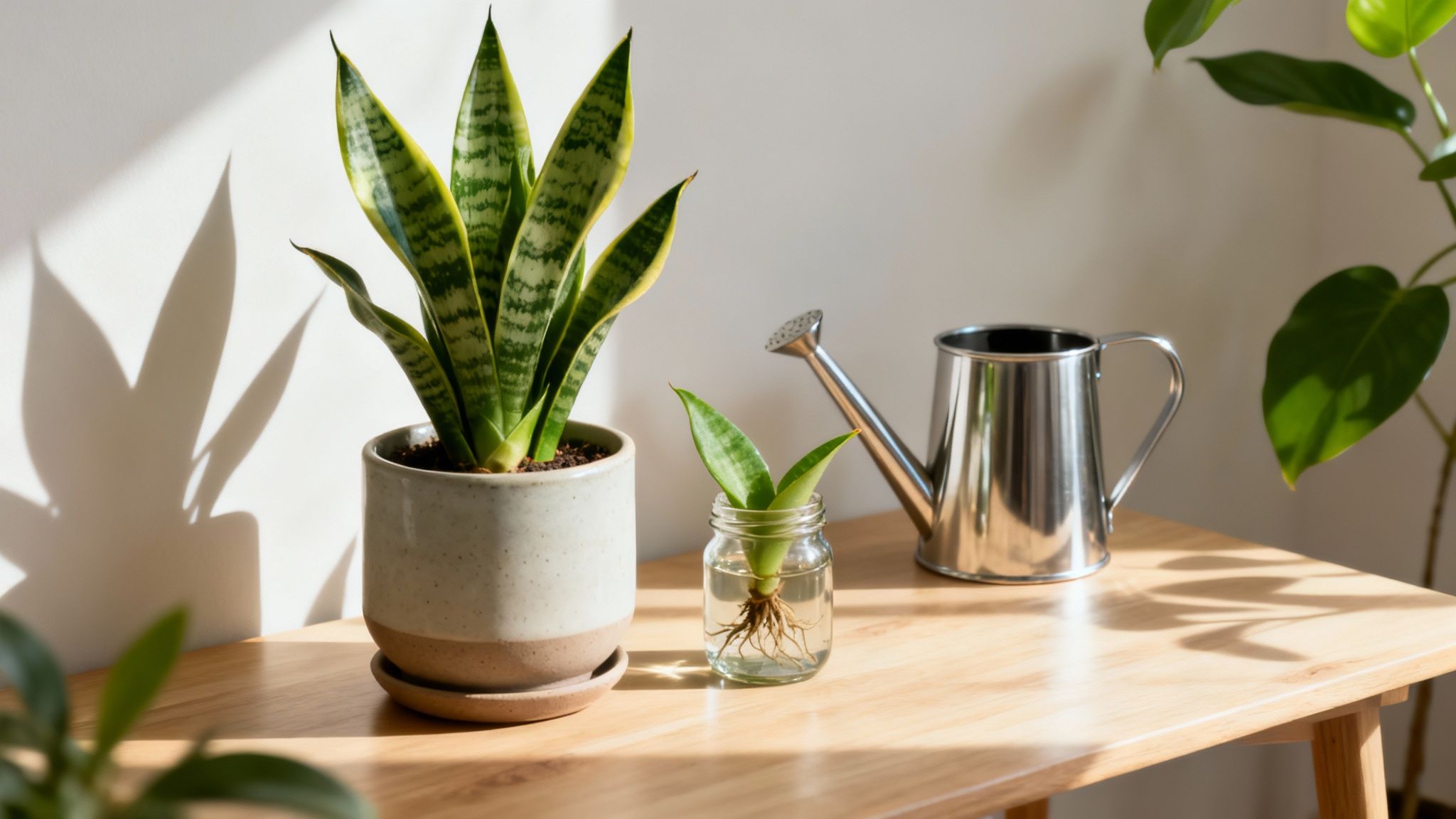It’s a moment every plant parent dreads: you spot a once-vibrant green leaf on your beloved plant turning a sickly yellow. It can feel like a small betrayal. But before you panic, know this is rarely a death sentence. It’s simply your plant’s way of communicating that something in its environment isn’t quite right. Most of the time, the culprit is one of the usual suspects: too much or too little water, a nutrient imbalance in the soil, or the wrong amount of sunlight. Understanding these signals is the first step to becoming a more intuitive gardener. This guide will walk you through the diagnostic process, helping you understand precisely what your plant is trying to tell you and giving you the actionable steps to bring it back to vibrant health.
Decoding Your Plant’s Cry for Help
Every gardener, from the newbie tending their first snake plant (Dracaena trifasciata) to the seasoned pro, has asked, "Why are my plants turning yellow?" This process, known as chlorosis, is a clear signal that your plant is missing a key ingredient for producing chlorophyll—the pigment that makes leaves green and powers photosynthesis.
Instead of guessing, think of yourself as a plant detective. Your job is to examine the clues—where the yellowing appears, its pattern, and the leaf's texture—to solve the mystery. If you need a high-tech assistant for your investigation, Tendra's AI disease diagnosis can often identify the problem from a single photo, taking the guesswork out of your plant care.
To help you get started, here’s a quick decision tree that visualizes the process.
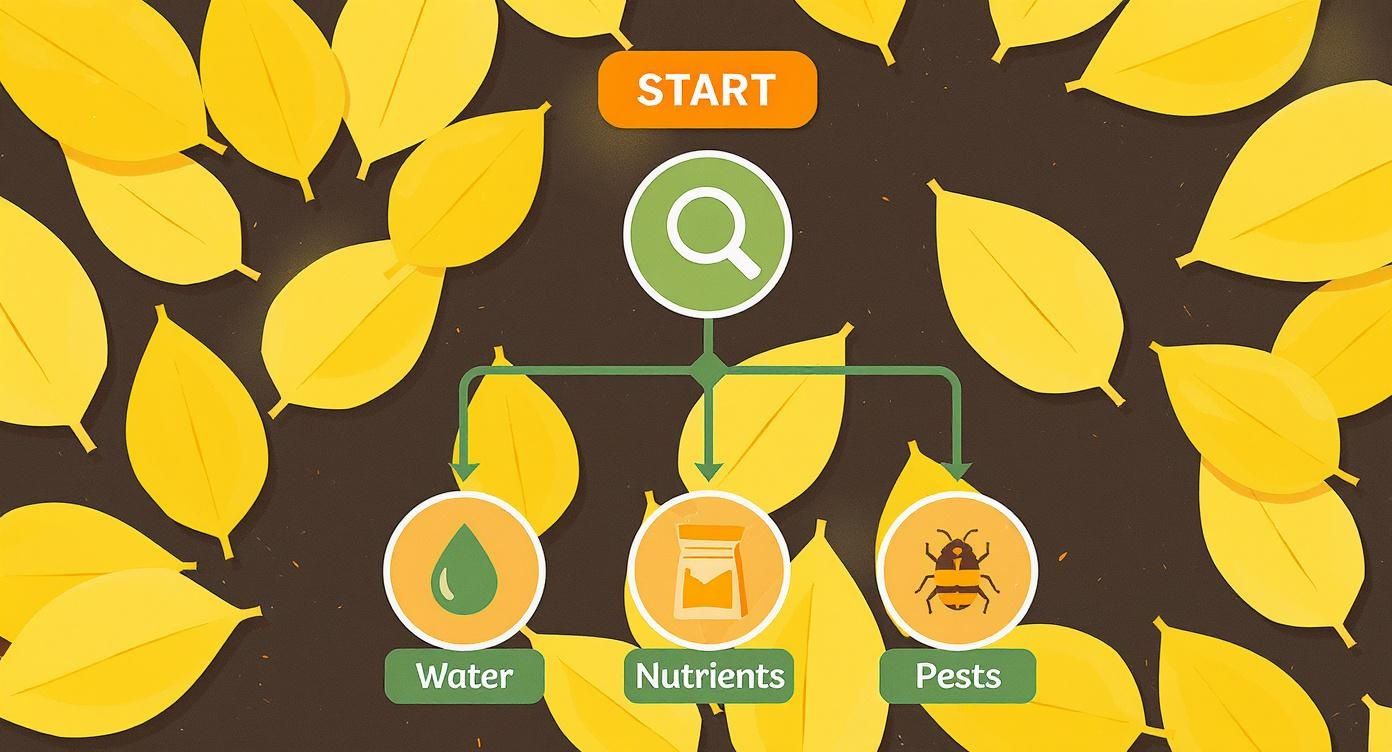
As the chart shows, your investigation should always start with the most likely cause: your watering habits. From there, you can move on to checking for nutrient problems, pests, or other environmental factors.
Quick Diagnosis for Yellow Leaves
To make things even easier, here’s a quick-glance table to help you match the symptoms you're seeing with the most likely cause.
| Symptom Pattern | Most Likely Cause | Quick Fix Action |
|---|---|---|
| Lower leaves are yellow, plant looks wilted, soil is wet or dry. | Watering Issues | Check soil moisture 2 inches (5 cm) deep. Adjust watering frequency. |
| Yellowing starts at the bottom and moves up, often with a pattern. | Nutrient Deficiency | Apply a balanced fertilizer appropriate for your plant. |
| Yellow spots or stippling, maybe some webbing or tiny bugs. | Pests | Inspect leaves closely (especially undersides). Treat with neem oil. |
| Leaves look faded or scorched, especially on the sunny side. | Too Much Light | Move the plant to a spot with less direct, intense sunlight. |
| New growth is yellow, older leaves are green. | pH Imbalance | Test your soil's pH level and amend as needed. |
| Yellow spots with dark borders, mushy stems, or powdery mildew. | Fungal/Bacterial Disease | Prune affected areas, improve air circulation, and apply a fungicide. |
Think of this table as your starting point. In the following sections, we'll dive deep into each of these problems and give you the specific steps you need to take to solve them for good.
Watering Woes: Too Much or Too Little?
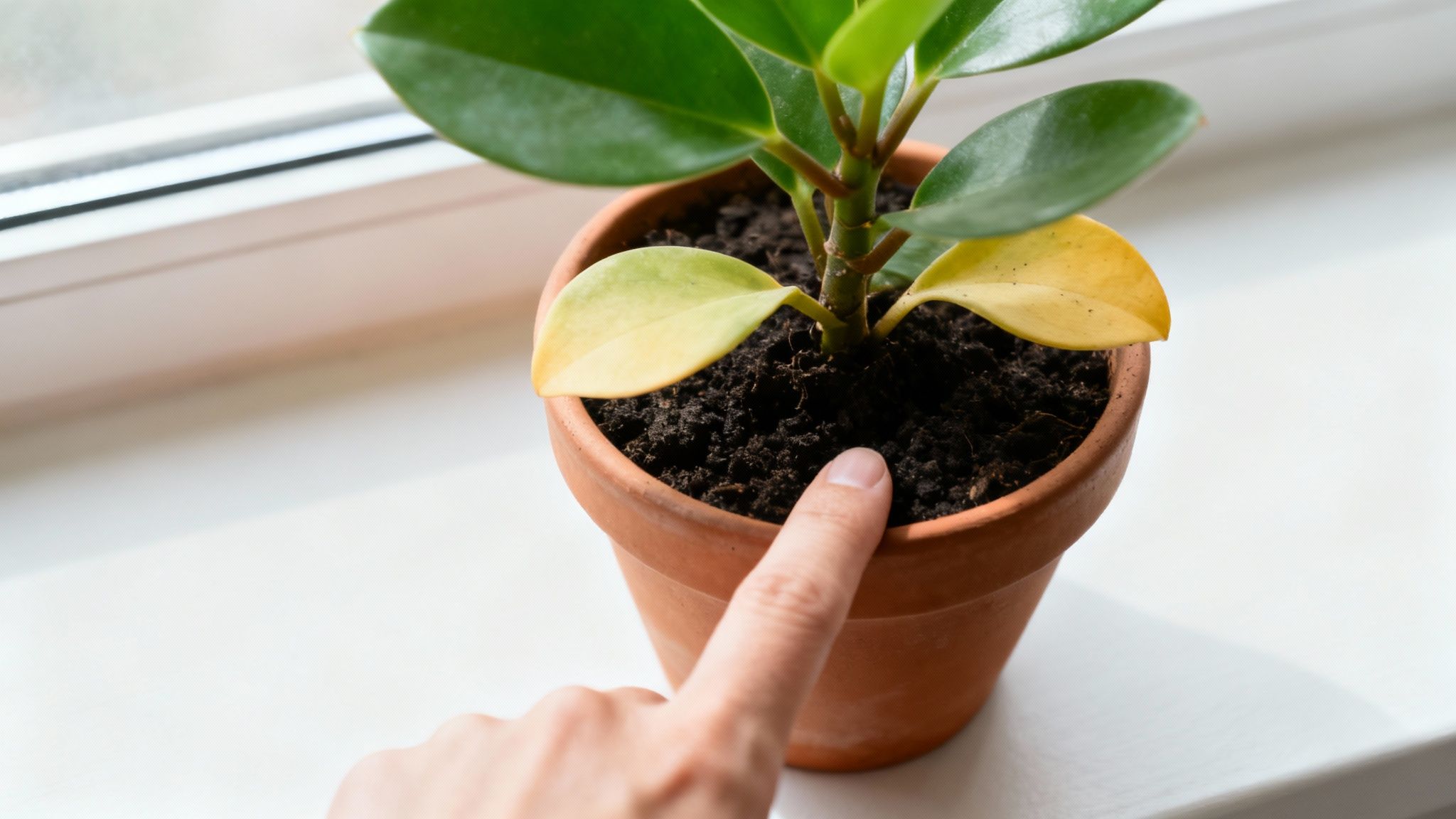
Of all the skills in a gardener's toolbox, mastering watering is what truly separates novices from pros. It’s also the single most common reason you're probably seeing yellow leaves. Both overwatering and underwatering will stress a plant, but they each send a different kind of yellow SOS signal.
Overwatering is the classic rookie mistake, and it comes from a good place! You want to give your plant everything it needs, but too much love can literally drown it. When the soil is perpetually waterlogged, the tiny air pockets that roots need to breathe get filled with water. Without oxygen, the roots shut down, stop absorbing nutrients, and eventually start to rot. This suffocation triggers a very specific symptom: the lower, older leaves will turn a soft, limp yellow.
Spotting the Difference: Overwatering vs. Underwatering
Underwatering, on the other hand, kicks a plant’s survival instincts into high gear. When a plant senses a drought, it goes into conservation mode. It will pull moisture and resources away from its older, less important leaves to keep its new growth alive. In this case, the yellow leaves will feel crispy, dry, and brittle. The whole plant might look wilted, but the key difference is the texture—the leaves will feel papery, not mushy.
Practical Tip: Your finger is the best moisture meter you'll ever own. Before you even think about grabbing that watering can, stick your index finger about two inches (5 cm) deep into the soil. If it comes out dry, it's time for a drink. If you feel any dampness, hold off for another day or two.
Taking the Guesswork Out of Watering
Figuring out the perfect moisture balance can feel like a guessing game, especially when you have a variety of plants with unique needs. This is where a little smart tech can be a game-changer. For those plants that need perfect timing, Tendra's Smart Care Reminders can build a personalized schedule just for you. The app considers your specific plant type, its pot, and even local weather data to send you timely reminders, preventing both over- and underwatering.
Unlocking The Secrets Of Soil Nutrition
When you’ve nailed your watering routine yet those leaves still yellow, it’s time to dig deeper—into the soil. A common answer to "Why are my plants turning yellow?" lies in their diet. Plants thrive on a balanced intake of minerals and nutrients to fuel chlorophyll production. Skipping key elements is like serving your plant half a meal; it simply won’t flourish.
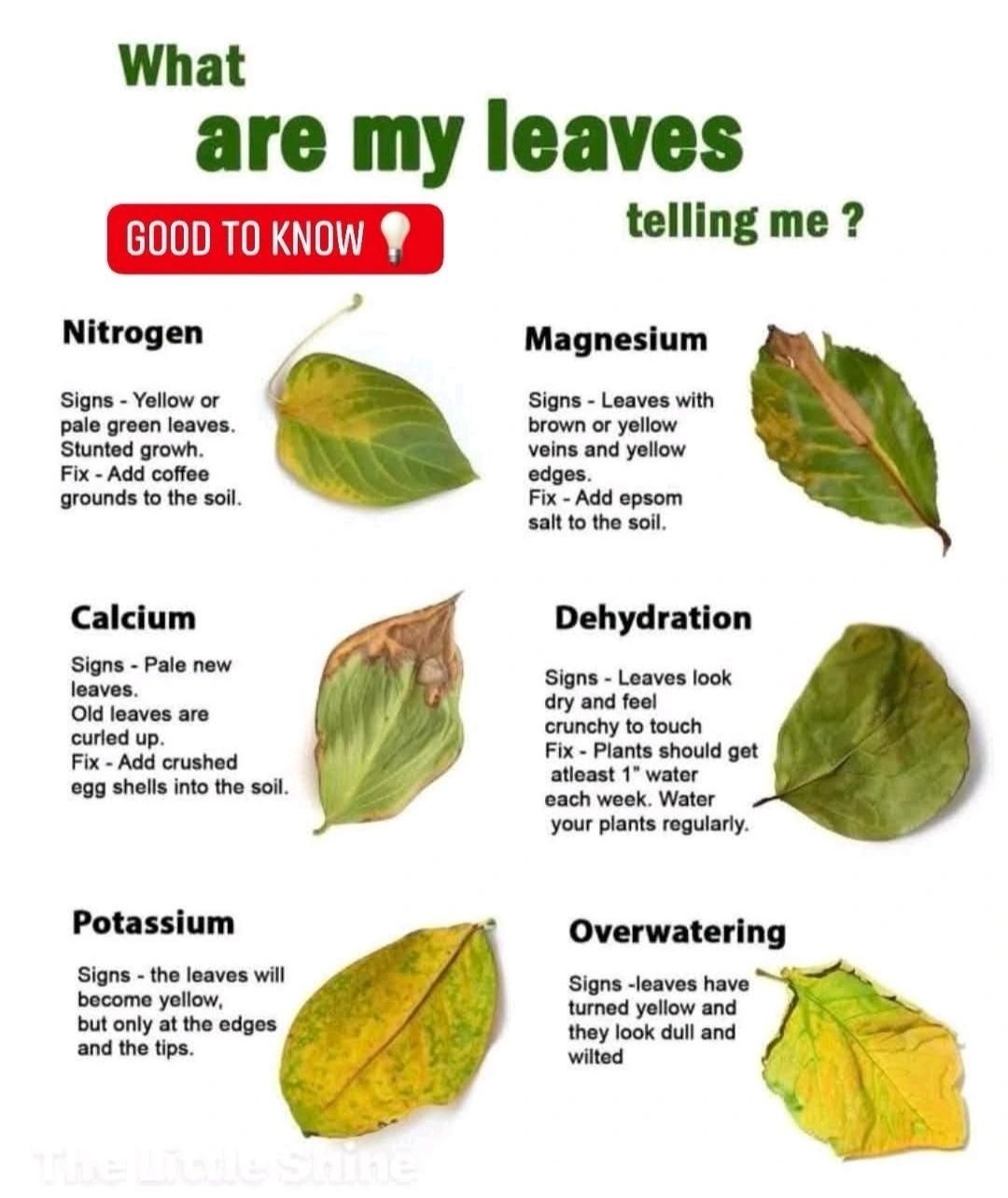
Identifying Deficiency Patterns
Each missing nutrient leaves a distinct “yellow footprint” on foliage, turning your garden into a detective’s playground. A nitrogen shortage shows up as uniform yellowing on older, lower leaves, as the plant reallocates its limited stores to new growth. Iron deficiency, however, paints fresh shoots with bright yellow tissue between green veins—a classic case of interveinal chlorosis.
| Nutrient | Symptom | Affected Leaves | Solution |
|---|---|---|---|
| Nitrogen | Uniform yellowing | Lower, older leaves | Apply balanced fertilizer |
| Iron | Yellow between veins | New growth | Use iron chelate or acidify soil |
| Magnesium | V-shaped yellow edges | Mid leaves | Add Epsom salts or Mg-rich mix |
Surprising Fact: It's estimated that 30% of the world's cultivated soils are deficient in zinc, a micronutrient crucial for enzyme function that can also cause leaf yellowing when absent.
Practical Steps To Balance Soil Nutrition
A simple soil test gives you pH and nutrient levels—your roadmap before any corrections.
Collect a soil sample from two spots, about 6 inches (15 cm) deep, to get an accurate reading.
Apply a balanced fertilizer tailored to your plant’s needs (e.g., one for acid-loving plants like azaleas).
Amend with compost or organic matter to boost soil structure and nutrient retention naturally.
For region-specific tips, Tendra’s Twin Plant Mates feature can pair you with local gardeners who share proven soil mixes for your climate. For fine-tuning acidity, check out our guide on mastering soil pH.
Finding the Perfect Balance of Light
Every plant has its own personal sweet spot for sunlight—its “Goldilocks zone.” It can't be too much or too little; it has to be just right. Getting the light wrong is a fast track to yellow leaves. Too much direct sun is like a bad sunburn for certain plants. For shade-lovers like a delicate fern (Dryopteris filix-mas) or a Prayer Plant (Maranta leuconeura), harsh light literally scorches their leaves, breaking down chlorophyll faster than the plant can replace it. The result? Leaves look bleached, faded to a pale yellow, or develop crispy brown spots.
When Not Enough Is Just as Bad
On the flip side, not enough light is essentially starvation. Without adequate sun for photosynthesis, a sun-worshipper like a Fiddle Leaf Fig (Ficus lyrata) can't produce enough chlorophyll to maintain its gorgeous green color. This light starvation leads to a slow, sad fade. The leaves will gradually go from vibrant green to a dull, uniform yellow before eventually dropping off as the plant conserves energy.
Practical Tip: Spend a day observing how the sun moves through your space. A south-facing window in the US provides intense, direct light, ideal for cacti and succulents. A north-facing window offers softer, indirect light, perfect for many houseplants.
Matching the Plant to the Place
The secret to preventing light problems is simple: match the plant to the place.
Do Your Homework: Before buying, use a resource like Tendra’s extensive plant database to look up your plant's specific light needs.
Observe Your Environment: Map the light in your home or garden throughout the day.
Supplement When Needed: If your space is naturally dark, especially in winter, a simple full-spectrum grow light can be a game-changer, ensuring your plants get the energy they need to thrive.
Identifying Pests and Hidden Diseases
So, you’ve checked the watering, the soil feels right, and your plant is getting the perfect amount of sun. If the leaves are still yellowing, it's time to play detective and look for uninvited guests. Often, the real culprit is a pest infestation or a sneaky disease working behind the scenes.
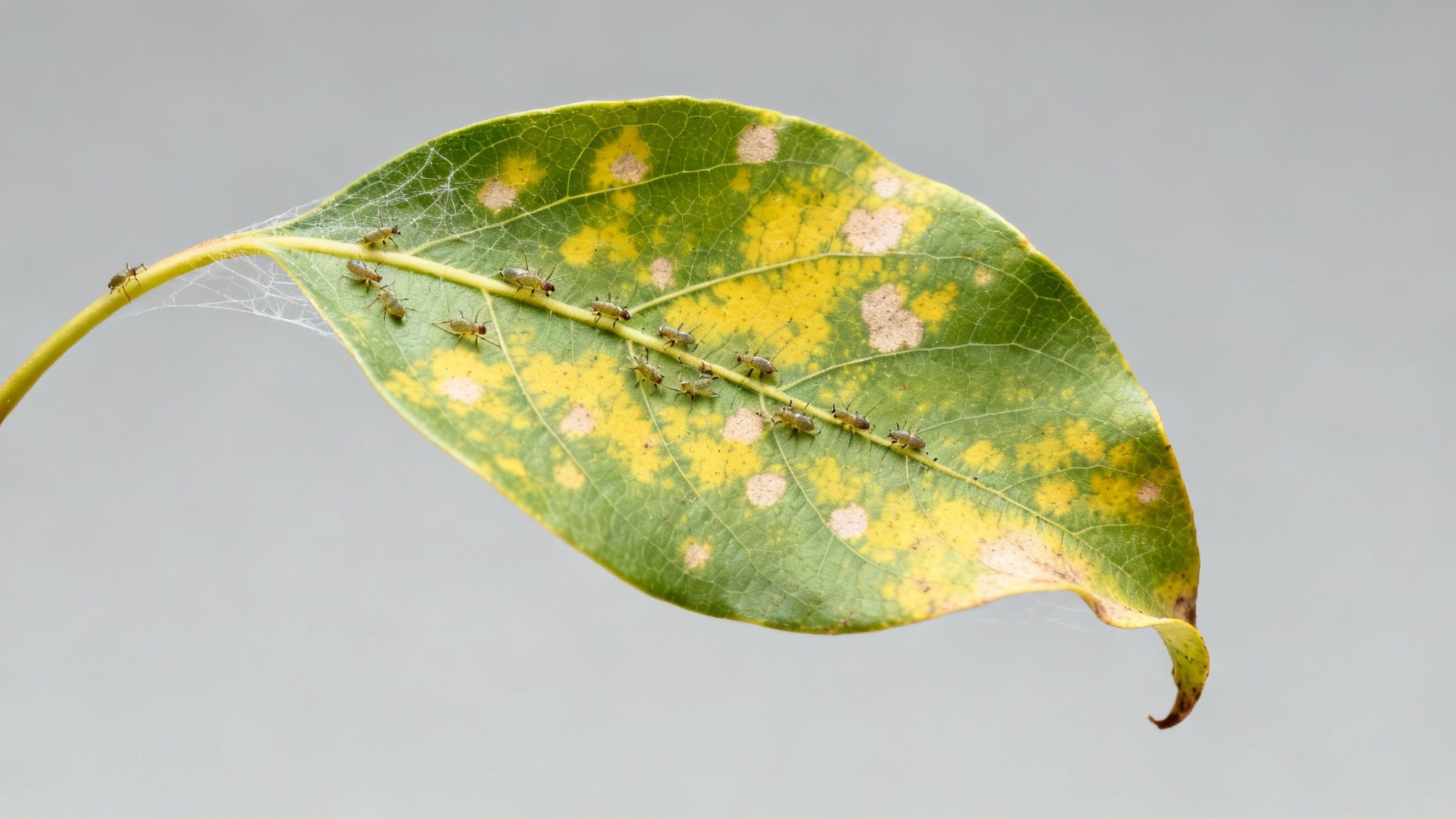
Many of the worst offenders are tiny sap-sucking insects like spider mites, aphids, and mealybugs. They use sharp mouthparts to drain the life out of the leaves, which often results in a distinct pattern of yellow spots or a speckled, faded look called stippling.
Common Culprits and Their Clues
These little bugs are masters of disguise, so you’ll need to inspect your plant thoroughly. They love to hang out on the undersides of leaves or along fresh, tender stems.
Spider Mites: Look for delicate, silky webs between the leaves and stems. The leaves themselves will look almost sandblasted with tiny yellow or white dots.
Aphids: These are small, pear-shaped insects that cluster on new growth, often leaving behind a sticky residue known as "honeydew."
Mealybugs: Look for what appears to be tiny cottony fluff, usually tucked into the nooks where leaves join the stem.
Practical Tip: If you spot pests, quarantine the plant immediately. For light infestations, wipe the leaves with a damp cloth or use a gentle insecticidal soap spray.
When Fungi and Bacteria Attack
Pests aren't the only hidden enemy; fungal and bacterial diseases can be just as damaging. Root rot, a direct result of overwatering, suffocates the roots, leading to a progressive yellowing that starts with the lowest leaves and creeps up the plant. Other diseases can be more aggressive, shutting down chlorophyll production entirely.
Problem-Solution Scenario: You find yellow spots with dark, target-like rings on your tomato plant’s lower leaves. This signals Early Blight, a common fungal issue. The solution: Grab clean shears, prune off every affected leaf to improve airflow, and stop watering from overhead. Keeping the foliage dry is key to preventing its spread. For a deeper look, check out our guide on how to identify plant diseases and save your garden.
Your Next Steps to Greener Leaves
Seeing yellow leaves can be disheartening, but it's not a failure. It's a learning opportunity and your plant's way of communicating. By systematically checking for the most common causes—watering, nutrients, light, and pests—you can confidently diagnose and solve the problem. Remember to start with watering; it's the culprit more often than not. After you've made a change, be patient. Plants operate on their own time. The goal isn't just to fix one yellow leaf but to build a deeper understanding of your plant's needs. Learning to answer the question, "Why are my plants turning yellow?" is what transforms you into a truly intuitive gardener. You don’t have to solve it alone. A strong community network turns a plant problem into a shared learning experience. Why not discover your local growing partners with Tendra—where local gardeners connect and thrive.
A Few Lingering Questions About Yellow Leaves
Still have some questions rolling around in your head? You're not the only one. Let's tackle some of the most common head-scratchers gardeners have when they see those dreaded yellow leaves.
Can Yellow Leaves Turn Green Again?
Once a leaf goes completely yellow, it’s past the point of no return. It has lost its chlorophyll, and sadly, it can't magically turn green again. Think of it as the plant making a smart business decision: it's pulling all the valuable, mobile nutrients out of that old, failing leaf to invest them in new, healthy growth.
Your best move is to simply snip off the fully yellow leaf. This helps the plant stop wasting energy on a lost cause and focus its resources where they matter most—on the parts that are actually thriving.
Why Are the Leaves On My New Plant Turning Yellow?
Ah, the classic case of transplant shock. Bringing a new plant home is a huge change for it. It's suddenly dealing with a totally new environment—different light, different humidity, and a new watering schedule. This stress often causes it to shed a few leaves as it adjusts. It's totally normal.
The key is to give it stability and consistent care. Don't add to the stress by immediately repotting it or moving it around a lot. Just let it settle in for a few weeks, find its footing, and it should bounce back.
Will Misting My Plants Prevent Yellow Leaves?
While misting can give a nice little humidity boost—something tropicals like Calathea definitely appreciate for preventing those crispy brown edges—it’s not a cure-all for yellowing leaves. Misting is more of a surface-level treatment. It won't fix the root causes like overwatering or a nutrient problem.
In fact, letting water sit on leaves for too long can sometimes invite fungal problems to the party. Your main focus should always be on getting the soil moisture right first. That’s where the real magic happens for overall plant health.
The Takeaway: A yellow leaf isn't a sign you've failed as a plant parent. It's a signal—a message from your plant. Learning to read these signs turns a common frustration into an opportunity to get even better at what you do.
Ready to finally understand what your plants are trying to tell you? Download Tendra and join a community of thousands of gardeners who connect, grow, and share their passion. Check out our AI diagnostic tools and find your local plant network today at https://tendra-app.com.









